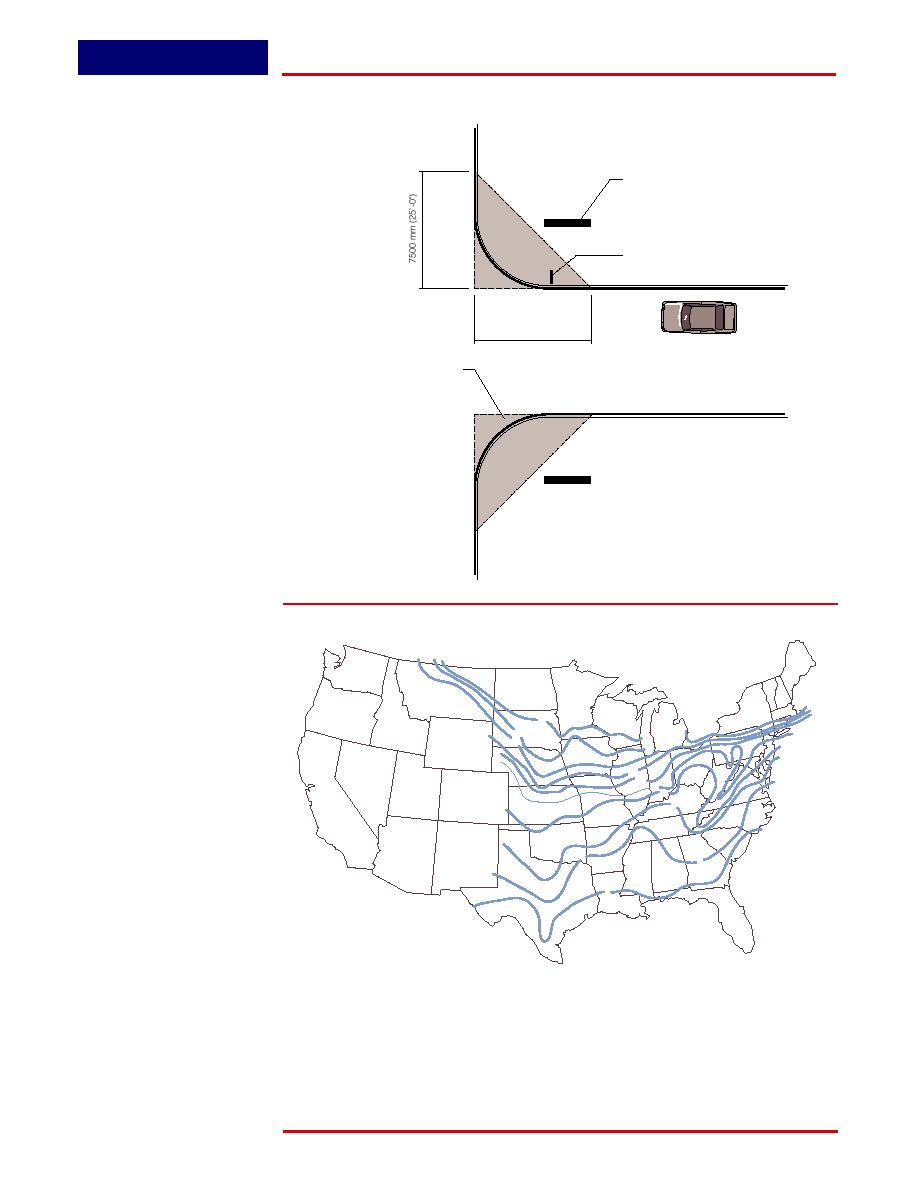
Installation
Exterior Signs
Placement:
Sight Triangle at
Intersections and
Driveways
For safety reasons, signs should
����
not be placed in the sight triangle
(shaded area) where they could
obscure a driver's vision. Also,
make sure that a signs location
is not blocking a drivers vision of
pedestrians.
��������
���������������
Insuring that there are no signs
in the sight triangle applies to
roadway intersections as well as
driveways.
����������������
Traffic regulatory signs are an
exception to this rule. Traffic
�����������������������
regulatory signs such as STOP and
���������������������������
YIELD signs should be placed at
����������������
the point at which compliance is to
be made.
�
Footing:
Size Configurations
90
13
38 44 50
3
4
60
19
8
9 16
45
45 38 45
1
75
83
Footing depth requirements vary
26
68
23 75 38
45 75 60 68
3 45
60
60
10 30
45
66 68
from location to location and size
60
60 83 60
68
45 38 11
105 51
16
89
53
75
11
64
75
of sign.
38
60 60
45
45
16
31
19 30
60
51 90
44 45 53
11 30
15
25
60
68
60
50
8
1
68 33 19
56 30
15 53 38
20
A large sign requires a larger
8
26
53
60 31
19
23
38
44
53 50
8
38
23 31
30
8
45
diameter and deeper footing or
38
53
13
45
44 38
15
8
25
38 43
8 18
base to withstand higher wind
30 45 60
3
8
23
68 19
25 28
3 21
30
23
loads. Poor soil compaction will
6
31
1 46 16
20 23 38 75
15
25
26
4
3
also require larger footings.
26
19
8 15
1 1 18
13
13
38
6
23
8
8
13
8 15
34
The depth of winter frost
3
25
penetration also effects the size of
9 8
1
30 26 21
3
1 4 25
footing required.
19
8
16
8
4
23 5
4
45
1
4
11
Locate your area of the country on
15 13
4
5
3 10
the map and then refer to the chart
3
to determine the size of footings
1
required for the various sizes of
1
signs.
It is recommended that on Sign
Type EI-01.01, EI-01.02, EI-01.04
and EI-01.05 the sign base be
designed by a licensed structural
engineer providing "sealed and
signed" drawings. This is to insure
that the base will structurally
support the sign taking into
account wind loads, the type of
soil and winter frost penetration.
Page 2- 10-5
02/2005



 Previous Page
Previous Page
